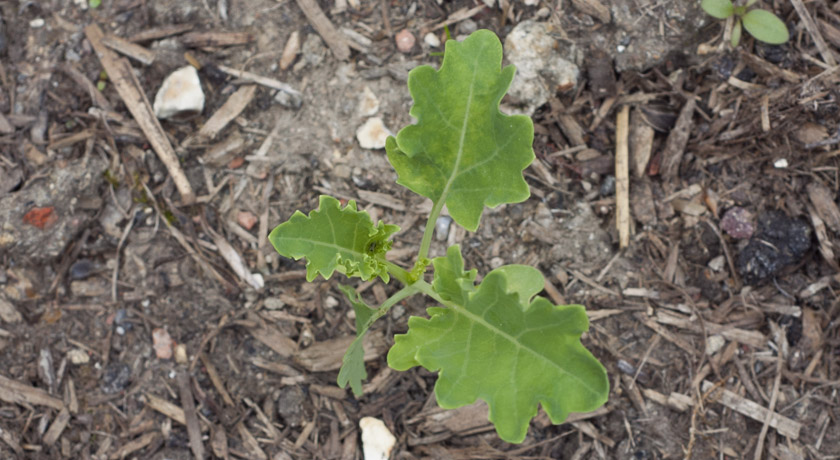

Spring planted kale – Cold hardy kale is one of the first vegetables I tuck in my raised beds in early spring.Here is a closer look at when to plant kale for winter. The kale that I harvest in winter may be plants from the previous spring, summer-transplanted kale, or a fresh crop of baby kale greens that were direct sown in early autumn.


Growing kale for baby greens is quick, easy, and results in plenty of tender leaves for salads, smoothies, and soups. This bed of baby Red Russian kale is just a month old. It’s therefore important when growing kale in winter to plant at the right time so that your crop is the proper size when the days get dark and cold. The kale plants then ‘hold’ in the garden or their season extenders until we harvest. This is because plant growth slows when the day length falls below 10 hours a day. While you can harvest kale all winter long, you’ll notice the plants don’t put on much new growth over the winter months. The impact of day length when growing kale in winter Finally, kale is one of the easiest vegetables to grow in garden beds and containers and thrives with little fussing. This is because the starch molecules in the plants convert to sugar molecules when the weather is cold. It’s also extremely hardy with the most cold tolerant varieties surviving down to -10 F (-23 C)! Kale, along with beets, carrots, and leeks, also tastes better in winter, or at least after a couple of hard frosts. First, this non-heading member of the cabbage family boasts nutrient-dense leaves high in vitamins and minerals. There are many reasons to consider growing kale in winter. For winter I try to pick the most cold hardy kales like Winterbor and Red Russian. There are so many types of kale you can grow for autumn and winter harvesting. Below you’ll find everything you need to know about growing kale in winter. And the best part is that kale is an easy-to-grow green that forms beautiful, productive plants. Depending where you live, winter kale can be left in the open garden or grown in a season extender like a cold frame, mini hoop tunnel, or greenhouse. We harvest a handful of hardy kale varieties throughout the winter months for salads, chips, smoothies, and soups. You don’t want to stimulate growth in a space that is too small.Kale is a cold season superstar, thriving in the spring, autumn, and yes, even winter garden.
Kale seedlings falling over full#
If they tolerate the half-strength and seem like they need more, you can up it to full strength.ĭon’t fertilize your seedlings until after you transplant them. Use a liquid organic fertilizer diluted to half-strength. You can fertilize young seedlings after transplanting as needed. Water your transplanted seedlings well and place them back under the light. For all others, plant them level or bury the stem about 1/4 inch or less. Then nest your seedling in the new container, filling in around the base of the plant and pressing down to seat it in well and remove air pockets.įor tomatoes, bury the stem leaving only 1 or 2 sets of leaves above the soil line. This is especially helpful for young seedlings who still have tender roots.īefore filling your containers, wet down your soil mixture to ensure even watering after you plant. We like to mix the potting mix and the seed starting mix in a 50:50 ratio. We recommend a container that is twice as big as what they are in now and a high-quality potting mix like Fox Farm Ocean Forest. You simply need a new container and some potting mix. Transplanting seedlings is quite easy to do. They’re already telling you they need more space, why stress them by making them grow bigger in the same small space?īoth of those options are viable alternatives, but you’ll have healthier plants if you transplant instead. You can dose your plants with some fertilizer but that will stimulate growth. We’ve found we have much better sprout rates in the smaller cell trays as compared to using other types of seed starting containers. This allows you to have more control over the temperature and moisture in the seed starting container. You’ll be much more successful in germinating seeds if you start them in small containers. You might wonder why we would go to the trouble of repotting seedlings at all? Why not just give them some fertilizer, or better yet, start them in a larger container to begin with? You’ll also get the larger plants sequestering all the nutrients and that will stunt the growth of your other plants as well. Some plants will grow taller than others and that will affect how much light the others get. You don’t want to overcrowd your plants when they’re young.


 0 kommentar(er)
0 kommentar(er)
